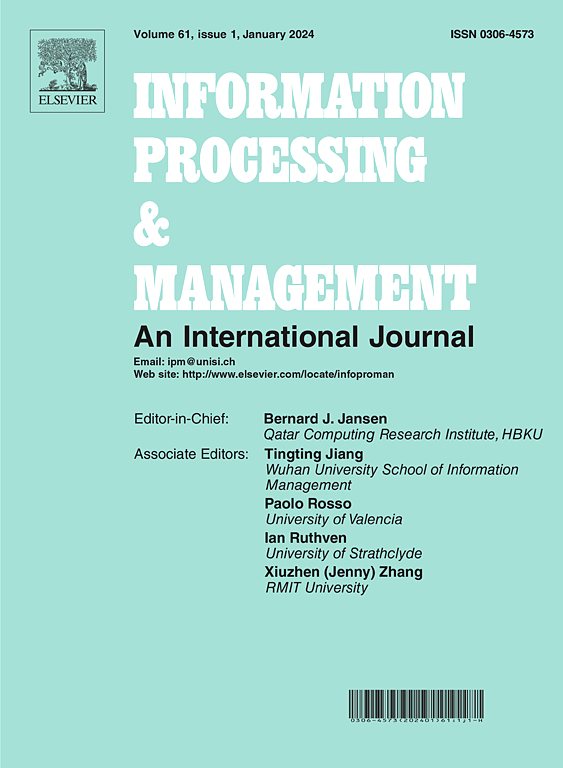网络暴力协同治理:两阶段多场景四方演化博弈与SBI1 I2R舆论传播
IF 6.9
1区 管理学
Q1 COMPUTER SCIENCE, INFORMATION SYSTEMS
引用次数: 0
摘要
网络暴力严重扰乱了网络和现实社会的公共秩序。现有的研究逐渐提倡协同治理,但依赖于宏观层面的理论分析。本研究整合微观与宏观视角,提出一种两阶段、多场景的网络暴力治理机制。第一阶段,基于进化博弈论,构建了网络暴力四方参与的多场景进化博弈模型。Matlab仿真表明,在强有力的政府监管下,政府对采用误导策略的网络媒体实施适度的惩罚可以达到最理想的稳定状态。第二阶段通过整合沟通动力学理论引入旁观者角色,在博弈策略的基础上考虑情感因素。这导致了一种新的SBI1I2R模型的发展,用于网络暴力中的民意传播。Netlogo模拟发现,增加网络媒体的“正确引导”策略,会降低网络暴力支持者的影响力及其节点降至零的时间,但不会显著缩短峰值发生的时间。相比之下,网络媒体和政府的合作干预在遏制舆论方面最有效,其次是政府独立的“强监管”。单纯依靠网络媒体的“正确引导”效果最弱。最后,将该机制应用于案例研究,基于生命周期理论的多阶段、多场景分析增强了该机制的实用性。本文章由计算机程序翻译,如有差异,请以英文原文为准。
Collaborative governance of cyber violence: A two-phase, multi-scenario four-party evolutionary game and SBI1 I2R public opinion dissemination
Cyber violence severely disrupts public order in both cyberspace and the real world. Existing studies have gradually advocated collaborative governance but rely on macro-level theoretical analyses. This study integrates micro- and macro-level perspectives to propose a two-stage, multi-scenario governance mechanism for cyber violence. In the first phase, a multi-scenario evolutionary game model with four parties involved in cyber violence was developed based on evolutionary game theory. Matlab simulations show that under strong government regulation, moderate levels of punishment implemented by the government against the online media that adopt misguidance strategies can achieve the most desirable stable state. In the second phase, the role of bystanders was introduced by integrating communication dynamics theory, and emotional factors were considered alongside game strategies. This led to the development of a new model for public opinion dissemination in cyber violence. Netlogo simulations found that increasing the “correct guidance” strategy by the online media reduces the influence of cyber violence supporters and the time it takes for their nodes to drop to zero, but does not significantly shorten the time for the peak to occur. Comparatively, collaborative intervention between the online media and the government was most effective in curbing public opinion, followed by the government’s independent “strong regulation.” Relying solely on the online media’s “correct guidance” produced the weakest effect. Finally, this mechanism was applied to a case study, and a multi-stage, multi-scenario analysis based on life cycle theory enhanced its practical applicability.
求助全文
通过发布文献求助,成功后即可免费获取论文全文。
去求助
来源期刊

Information Processing & Management
工程技术-计算机:信息系统
CiteScore
17.00
自引率
11.60%
发文量
276
审稿时长
39 days
期刊介绍:
Information Processing and Management is dedicated to publishing cutting-edge original research at the convergence of computing and information science. Our scope encompasses theory, methods, and applications across various domains, including advertising, business, health, information science, information technology marketing, and social computing.
We aim to cater to the interests of both primary researchers and practitioners by offering an effective platform for the timely dissemination of advanced and topical issues in this interdisciplinary field. The journal places particular emphasis on original research articles, research survey articles, research method articles, and articles addressing critical applications of research. Join us in advancing knowledge and innovation at the intersection of computing and information science.
 求助内容:
求助内容: 应助结果提醒方式:
应助结果提醒方式:


